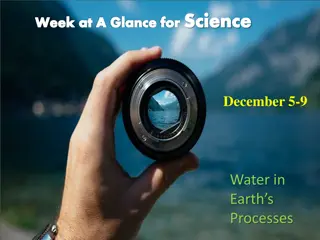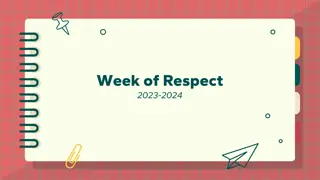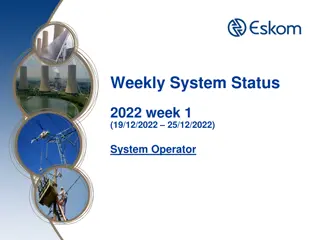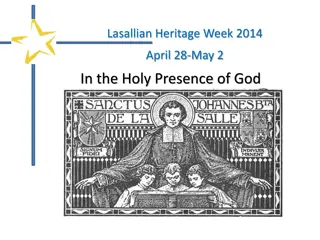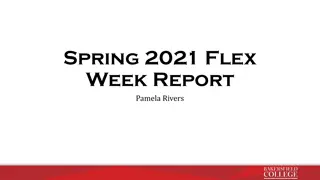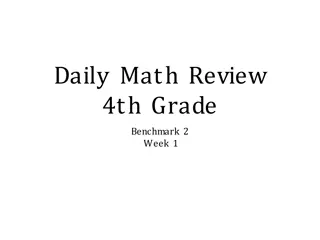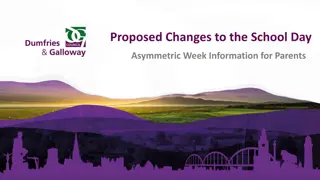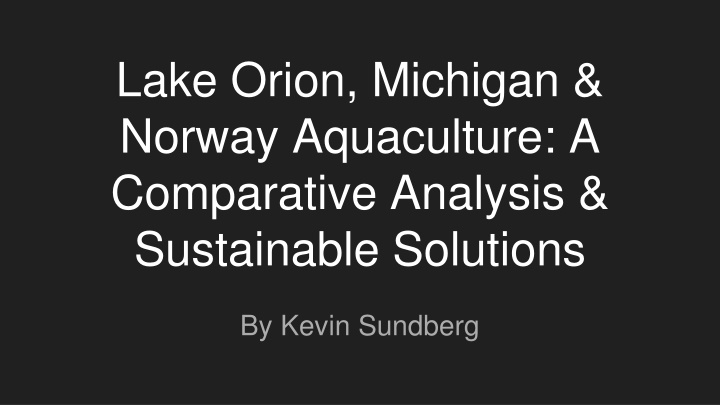
Sustainable Aquaculture Solutions: Lake Orion & Norway Comparative Analysis
Explore potential aquaculture ventures in Lake Orion, Michigan, and Norway, focusing on social, environmental, and economic viability. Learn about community-based aquaculture solutions, recirculating systems, and the success and sustainability concerns of Norwegian salmon farming.
Download Presentation

Please find below an Image/Link to download the presentation.
The content on the website is provided AS IS for your information and personal use only. It may not be sold, licensed, or shared on other websites without obtaining consent from the author. If you encounter any issues during the download, it is possible that the publisher has removed the file from their server.
You are allowed to download the files provided on this website for personal or commercial use, subject to the condition that they are used lawfully. All files are the property of their respective owners.
The content on the website is provided AS IS for your information and personal use only. It may not be sold, licensed, or shared on other websites without obtaining consent from the author.
E N D
Presentation Transcript
Lake Orion, Michigan & Norway Aquaculture: A Comparative Analysis & Sustainable Solutions By Kevin Sundberg
Aquaculture Potential: Lake Orion & Norway This presentation explores potential aquaculture ventures in Lake Orion, Michigan, and Norway, focusing on social, environmental, and economic viability. It will examine the feasibility of introducing non-traditional aquaculture practices in Lake Orion, Michigan, and compares it to existing systems in Norway. I will analyze potential benefits, challenges, and propose sustainable solutions for both locations.
Lake Orion: A Case for Community-Based Aquaculture Lake Orion faces challenges like declining fish stocks and limited economic opportunities. Proposed Solution: A community-based cooperative raising native fish species like the Yellow Perch. Benefits: Economic Development: It can create jobs and stimulate local economies, particularly in rural areas. This could be especially beneficial for Lake Orion, a village with a strong sense of community. Sustainable Food Source: Locally-sourced aquaculture can provide a sustainable and environmentally friendly source of protein, reducing reliance on industrial fishing practices and long-distance transportation. Educational Opportunities: Community-based aquaculture projects can serve as educational platforms, teaching residents about sustainable food systems, aquatic ecosystems, and environmental stewardship. Improved Water Quality: Certain types of aquaculture, like shellfish farming, can actually improve water quality by filtering out excess nutrients and pollutants.
Sustainable Aquaculture in Action: Recirculating Systems System: Recirculating Aquaculture System (RAS) is a land- based aquaculture technology that raises fish in tanks where water is continuously filtered, treated, and recirculated. This closed-loop system minimizes water usage and environmental impact while offering greater control over production parameters. Recirculating Aquaculture Systems represent a significant advancement in sustainable aquaculture, offering a more environmentally responsible and resource-efficient way to produce seafood. While challenges remain, ongoing research and technological advancements continue to improve the efficiency and affordability of RAS, paving the way for a more sustainable future for aquaculture. Social Enhancement: Training programs for community members on aquaculture techniques and business management.
Norwegian Salmon Farming: Successes & Sustainability Concerns System: Open-net cage farming of Atlantic Salmon is prevalent. Successes: Economic Engine: Salmon farming is a major contributor to the Norwegian economy, generating significant revenue, employment, and export earnings. Coastal communities, in particular, have benefited from the industry's growth. Global Food Source: Norwegian salmon farms provide a significant source of protein for a growing global population. Farmed salmon is a readily available and affordable alternative to wild-caught fish, contributing to food security. Environmental Concerns: Pollution from Waste: Waste products from salmon farms, including uneaten feed and feces, can impact water quality and benthic habitats if not properly managed. Interactions with Wild Salmon: Escaped farmed salmon can interbreed with wild populations, potentially impacting the genetic integrity and resilience of wild stocks. Use of Antibiotics: While antibiotic use has decreased, concerns remain about potential antibiotic resistance developing in farmed fish and transferring to wild populations.
Towards More Sustainable Salmon Farming Environmental Improvement: Transition to closed- containment systems or offshore farms to minimize pollution. Social Responsibility: Strict Regulations: Norway has implemented stringent regulations governing salmon farming, addressing issues like fish health, waste management, and environmental impact. Feed Sustainability: The industry has made progress in reducing its reliance on fishmeal and fish oil in salmon feed, incorporating alternative protein sources like plant-based ingredients and insect meal. Escape Prevention: Efforts to minimize escapes of farmed salmon have intensified, including the development of more secure net pens and improved monitoring systems. Disease Management: Vaccination programs and improved farming practices have helped reduce the incidence of diseases in farmed salmon, minimizing the need for antibiotics.
Learning from Different Scales: A Comparative Approach Scale: Lake Orion focuses on small-scale, community-driven models, while Norway operates large-scale commercial farms. Species: Native species in Lake Orion vs. introduced Atlantic Salmon in Norway. Sustainability: Both locations face unique challenges and opportunities for improvement. Large-scale Small-scale
From Tank to Table: Ensuring Economic Success Lake Orion: Direct-to-consumer sales, partnerships with local restaurants, and value-added products. Norway: Existing global market share; focus on premium, sustainably-certified products. Both Norway and Lake Orion can achieve economic success in fish farming by leveraging their unique strengths and addressing their specific challenges. While Norway focuses on maintaining its global dominance through technological advancements and sustainability improvements, Lake Orion can carve out a niche by embracing a community-based approach, prioritizing local markets, and showcasing environmental responsibility
Balancing Profit & Planet: The Future of Aquaculture Aquaculture holds significant potential for both Lake Orion and Norway. Sustainable practices, community engagement, and responsible innovation are crucial for long-term success. Closed Containment Systems: Moving towards closed containment systems, like offshore farms and land-based recirculating aquaculture systems (RAS), can help minimize environmental impacts and interactions with wild salmon. Alternative Feed Sources: Continued research and development of sustainable and alternative feed ingredients are crucial to reduce reliance on marine resources. Integrated Multi-Trophic Aquaculture (IMTA): Exploring IMTA, where different species are farmed together in a mutually beneficial system, can improve waste management and ecosystem balance. Transparency and Traceability: Enhanced transparency and traceability throughout the supply chain can build consumer trust and promote responsible farming practices.
Sources A schematic diagram showing a double net-cage system. (n.d.). schematic-diagram-showing-a-double-net-cage-system_fig1_228563184 Agrotechnomarket.com. (n.d.). Design and Benefits of Recirculating Aquaculture System (RAS). Agriculture, Technology, and Business Market. https://www.agrotechnomarket.com/2018/10/recirculating-aquaculture-system- ras.html Aquaculture. Michigan Sea Grant. (n.d.). aquaculture/aquaculture/ https://www.researchgate.net/figure/A- https://www.michiganseagrant.org/topics/fisheries-and- Catfish Farming in Mississippi - 2006-04. (2024). Ms.gov. https://mshistory.mdah.ms.gov/issue/catfish-farming-in- mississippi Lake Orion. Pure Michigan | Official Travel & Tourism Website for Michigan. (2023, August 29). https://www.michigan.org/city/lake-orion Sourcing Salmon: Farmed or Wild? (n.d.). Quality Assurance & Food Safety. https://www.qualityassurancemag.com/article/sourcing-salmon-farmed-or-wild/ The salmon you buy in the future may be farmed on land. (2021, April 25). BBC News. https://www.bbc.com/news/business-56829129 Yellow Perch. (n.d.). Chesapeake Bay. https://www.chesapeakebay.net/discover/field-guide/entry/yellow-perch


